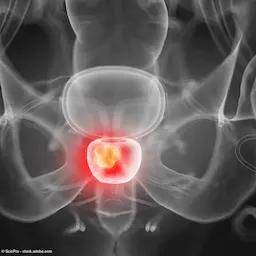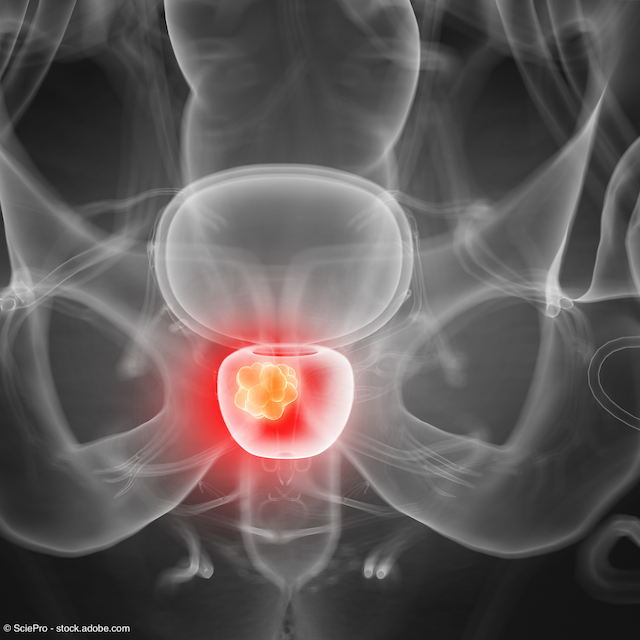News
Article
Trial launches of 61Cu-based radiotracer in PSMA-positive prostate cancer
Author(s):
Key Takeaways
- Cu-NODAGA-PSMA I&T shows promising diagnostic performance in detecting osseous lesions in PSMA-positive prostate cancer patients.
- The agent's 3.3-hour half-life and room temperature manufacturability offer logistical advantages over current imaging modalities.
The trial is comparing the diagnostic performance of 61Cu-NODAGA-PSMA I&T with that of 18F-piflufolastat.
The first patient has been imaged in a phase 1 trial of the diagnostic imaging agent 61Cu-NODAGA-PSMA I&T (61Cu-NuriPro), which is under investigation for use in patients with prostate-specific membrane antigen (PSMA)-positive prostate cancer, according to a news release from NUCLIDIUM, the developer of the agent.1
The theranostic component, 67Cu-NODAGA-PSMA I&T, is in preclinical development.

The trial is comparing the diagnostic performance of 61Cu-NODAGA-PSMA I&T with that of 18F-piflufolastat. Patients will be enrolled and imaged in the investigator-initiated, non-randomized trial at Hoag Memorial Hospital Presbyterian in Newport Beach, California.
“Prostate cancer remains the most frequently diagnosed cancer and the second most common cause of cancer death in American men. Rapid and precise diagnosis is essential for effective treatment,” explained principal investigator Gary Ulaner, MD, PhD, director of molecular imaging and therapy at Hoag Memorial Hospital Presbyterian, in the news release.1 “Our study aims to assess the clinical safety of 61Cu-NuriPro and compare its diagnostic performance with an FDA-approved PSMA-targeting radiotracer. The first patient has not experienced any adverse events so far, and the scan with 61Cu-NuriPro showed more osseous lesions than 18F-piflufolastat at 1 hour post-injection. Also, the PET scans with 61Cu-NuriPro identified more osseous lesions at 2 and 4 hours compared to 1 hour post-injection. These preliminary clinical findings are in accordance with the preclinical results and underline the potential, favorable imaging performance of 61Cu-NuriPro.”
According to NUCLIDIUM, 61Cu-NODAGA-PSMA I&T may hold potential advantages over other imaging modalities. For example, the company noted that the 3.3-hour half-life of 61Cu-NODAGA-PSMA I&T may allow for a greater distribution range following production compared with the 1- to 2-hour half-life of many current molecular imaging agents.
Additionally, NUCLIDIUM added, “The company’s candidate can be easily manufactured at room temperature, enabling on-demand preparation and a simplified and easy-to-apply workflow with reduced need for laboratory equipment. It further enables delayed imaging, allowing for the detection of even the smallest metastases.”1
The diagnostic tracers are manufactured by PharmaLogic Holdings, with whom NUCLIDIUM entered into a collaborative agreement with in 2023. In May 2024, NUCLIDIUM also announced a strategic partnership with Guerbet to advance the clinical development of the company’s copper-based radiopharmaceuticals.2
The theranostic counterpart for the imaging agent, 67Cu-NODAGA-PSMA I&T (67Cu-NuriPro) is currently completing its preclinical program. The company plan to initiate a phase 1 trial of the theranostic in 2025.
NUCLIDIUM also plans to initiate a phase 1/2 trial of both the imaging agent, 61Cu-NODAGA-PSMA I&T, and the theranostic, 67Cu-NODAGA-PSMA I&T upon successful completion of the current phase 1 study of the 61Cu-based imaging agent.
“With the initiation of this first trial, we have begun building the clinical data aiming to demonstrate the differentiation of our radiopharmaceutical approach after our copper-based candidates have shown greater imaging capacity with less toxicity in preclinical studies,” said Leila Jaafar, PhD, CEO and co-founder of NUCLIDIUM, in the news release.1 “Copper’s unique properties allow us to establish the first true theranostic pipeline that can achieve more accurate staging of the individual patient and more precise treatment of their disease. Our NuriPro diagnostic’s imaging profile can overcome both detection and production challenges for physicians and patients living with prostate cancer, and we look forward to further exploring its potential.”
Reference
1. NUCLIDIUM announces first patient imaged in phase 1 study evaluating 61Cu-based radiotracer in patients with PSMA-positive prostate cancer. News release. NUCLIDIUM. October 21, 2024. Accessed October 23, 2024. https://nuclidium.com/nuclidium-announces-first-patient-imaged-in-phase-1-study-evaluating-61cu-based-radiotracer-in-patients-with-psma-positive-prostate-cancer/
2. NUCLIDIUM and Guerbet form strategic partnership to support the advancement of targeted copper-based radiotheranostics. News release. NUCLIDIUM. May 22, 2024. Accessed October 23, 2024. https://nuclidium.com/nuclidium-and-guerbet-form-strategic-partnership-to-support-the-advancement-of-targeted-copper-based-radiotheranostics/
Newsletter
Stay current with the latest urology news and practice-changing insights — sign up now for the essential updates every urologist needs.















